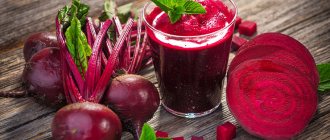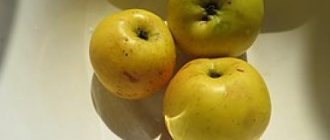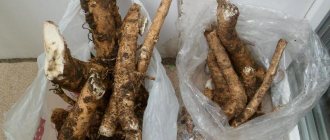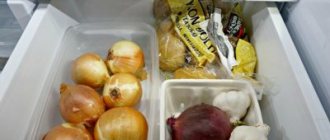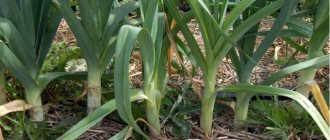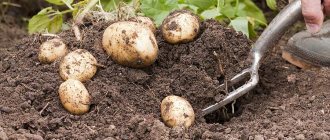The main purpose of cellars and basements is to store vegetables during the winter. The third most popular garden vegetable after potatoes and carrots is beets. It grows well even in harsh climates and does not require particularly complex care. Beetroot is practically not used for canning, but fresh and boiled it is added to many dishes of Russian and Ukrainian cuisine. A lot has already been said about how to store beets in the cellar in winter. I propose to systematize this knowledge and sort it into shelves.
Beet varieties for long-term storage
As always, the variety matters. We choose beets that are bright, sweet and at the same time have good keeping quality. Here is a list of varieties and hybrids that have excellent taste and are stored for a long time:
- Salad,
- Pronto,
- Mulatto,
- Cold resistant 19,
- Valenta,
- Late winter A-474,
- Rocket,
- Egyptian flat,
- Libero,
- Bona,
- Renova,
- Bordeaux-237,
- single sprout,
- Bonel,
- Gribovskaya flat A473,
- Pablo F1,
- Boltardi,
- Bravo,
- Larka,
- Incomparable A463,
- Detroit.
Have you decided on the variety? Great, we have taken the first step towards proper storage of beets. The next key factor affecting the shelf life of fruits is harvesting. This is where we gardeners often complicate our lives and ruin the fruits of our labor...
Do they plant beets before winter?
Beets are one of the vegetable crops that grow well when sown before winter. Moreover, winter sowing has many advantages.
Why beets should be sown in late autumn:
- the seeds are hardened, so the plants are hardy and have strong immunity;
- seedlings are resistant to spring return frosts;
- earlier harvest compared to beets sown in spring;
- there is no need to treat the seeds before sowing - they are simply buried in the soil;
- time is saved in the spring - you have to work less in the beds;
- There is no need to choose the time to plant beets in the spring - gardeners are often unsure of the sowing time.
Winter beets are intended for the summer period; they are not stored for storage, since they ripen very early. Early ripening varieties that are resistant to cold and bolt formation are planted in the fall.
In areas characterized by thaws and returning frosts, it is better not to sow beets before winter - it is problematic to obtain a harvest under such conditions. In such climatic conditions, it is better to sow beets in the spring.
The best varieties for winter sowing:
- Red ball. An early cold-resistant variety with round fruits. Average weight - 250-300 g. Root vegetables are dark burgundy, with sweetish pulp.
- Podzimnyaya A-474. Early beets with oval-rounded roots. Color: dark burgundy. Weight - 200-300 g. It has good taste and keeping quality.
- Incomparable A-463. Mid-season beets with high immunity, not prone to bolting, and easy to grow. The pulp is dark red, with high taste.
- Bordeaux 237. A variety with mid-early ripening and excellent taste. Root vegetables are dark purple. Weight - 250-450 g.
- Northern ball. Early cold-resistant beet, not prone to flowering, long-lasting. The weight of root vegetables is 150-350 g.
September is generous with warm, sunny days, which means it's a great time to harvest beets. If you follow the rules of harvesting and storage, root crops collected in early autumn have every chance of surviving safely until the next harvest.
0
0
Copy link
Preparing root vegetables for storage
How to remove beets from the garden
A clear and warm autumn day is the best time to harvest. A cloudy but dry day will also work. But it is not advisable to dig up beets in damp, chilly weather, although sometimes you have to. It is more difficult to preserve wet beets for the winter. About a month before digging, we stop all watering.
As for the timing of harvesting, it is always recommended to dig up beets for storage before the first frost. In the Moscow region this is usually the end of September for late varieties, the end of August or the beginning of September for mid-season varieties. Since the top of the root crop protrudes from the ground, it can freeze at sub-zero temperatures. A frozen vegetable cannot be stored.
We advise you to pay attention to the color of the beet leaves. Yellowing and drying tops are a sure sign that the harvest time has already arrived.
The correct technology for harvesting beets is this: dig them up with a pitchfork or shovel, slightly lifting the soil, and only then carefully pull the fruits out by the tops or pick them out of the ground with your hands like potatoes.
The skin of beets is thin and can be damaged very easily. Any scratch, puncture or cut can become an open door for putrefactive microbes. Therefore, there is no need to pull the beets out of the ground as hard as you can, throw the root crops on the ground or tap them against each other.
Drying root vegetables
Having dug the beets out of the garden, we immediately send them to dry.
In dry weather, you can dry it directly outside for 2-4 hours. You should not overexpose: root vegetables may lose too much moisture and then wither. If you had to pick beets out of the mud in the rain, you need to dry them under a roof and for a longer time. We scatter our harvest in a well-ventilated area and leave it for a week.
Trimming and processing
After the beets have dried, we begin cleaning and pruning. We put on cloth gloves and carefully remove the remaining soil from the root crops. There is no need to scrub fanatically, use a brush or pick out clods of earth with a knife.
We do not twist the tops, but cut them off. And not completely, leaving a petiole of about a centimeter. Carefully remove the side roots, but do not touch the main root. Fewer “open wounds” means less risk of infection, everything is the same as in humans.
Selection of root crops suitable for storage
Some gardeners like large beets, others prefer small ones. And for storage during a long winter, medium-sized beets, about 10-12 centimeters in diameter, are considered ideal. Therefore, the last preparatory activity will be sorting.
Once again we inspect the root crops and reject those that are not suitable: damaged, huge, or, conversely, small ones with signs of rotting or disease. We will send them for processing or for food. And strong, medium-sized and healthy fruits have a direct path to storage.
Common mistakes when harvesting beets
Mistakes made when harvesting beets result in rapid spoilage of root crops. This most often leads to putrefactive diseases and poor shelf life.
The most common mistakes when harvesting beets:
- Weather. There are many rainy days in autumn, so it can be difficult to choose the right weather.
- Maturity stage. If unripe root vegetables are removed from the soil, they are stored very poorly even in the most favorable conditions and have an unimportant taste. It is also a mistake to collect overripe beets - they are prone to cracking.
- Deadlines. Harvesting must be done strictly before frost. It is necessary to clarify when the first frost may be observed in the region in order to remove root crops before they occur.
- Priming. If you pull beets out of hard, dry soil, you can easily damage the roots. After this, they are not suitable for storage. To prevent this from happening, the soil, which has hardened after a long drought, is watered abundantly - it softens and the process of extracting beets is simplified.
Vegetables collected during rain are saturated with moisture, watery and tasteless, and crack due to excess liquid.
Gross mistakes made during harvesting cause unnecessary crop losses.
How to store beets in the cellar
Having a cellar solves all problems with storing vegetables in winter. It is enough to keep it clean, maintain the necessary humidity and air circulation. Under proper conditions, beets will fit perfectly both in a closed container (in a box with sand or in a bag) and in an open storage method (in a pyramid or in bulk on a rack, in bulk, in open baskets, boxes or boxes.
Optimal storage conditions
So under what conditions will beets lie quietly until the new harvest and will not deteriorate, wither or germinate? They are:
- cool (air temperature from 0°C to +3°C). At higher temperatures, the beets' buds awaken early and begin to grow. At low temperatures, the root crops freeze and then rot.
- darkness.
- Fresh air. In a ventilated cellar there is less chance of encountering any pathogenic fungus.
- high humidity. To prevent the beets from wilting, the humidity in the storage should be between 80-85%.
Methods and options for storing beets
We know the optimal conditions. In theory. But creating and maintaining them in your own basement or cellar is not so easy. Therefore, to be safe, many summer residents do not simply put beets in boxes, bags, or scatter them on a rack. They add “fillers” to the container. Eg:
Sand
Sand calcined in the sun or fire perfectly retains moisture in root crops, increasing their safety during long-term storage. We put the beets in boxes and sprinkle them with layers of sand (2-4 centimeters). Or we fill a plastic bag with beets, and pour sand inside on top.
Ash and chalk
Root crops covered with a thin layer of ash or chalk are better protected from pathogens, rot less often, and therefore last longer. We dust the dry beets with chalk powder or sifted ash and place them in boxes.
Salt
Some people advise sprinkling the beets with table salt. Of course, salt absorbs excess moisture well and prevents the spread of germs. But you can’t cover a large harvest with salt – you need too much of it.
Leaves
You can put leaves of fern, tansy, rowan, and horseradish in bags or boxes along with beets. The foliage prevents the vegetables from coming into contact with each other and releases phytoncides, preventing the beets from spoiling ahead of time. The only downside is that you will also need to prepare a lot of leaves.
Sawdust and peat
Instead of sand, ash or salt, sawdust, shavings or dry peat are successfully used to store beets.
These materials fill the free space of a bag, box or box so that a thick layer of 3-4 centimeters is formed on top. Just like carrots, beets can be dipped in a clay mash. In a hard shell, burgundy root vegetables will remain juicy for a long time.
Another option is storing beets in foil. At the bottom of the box or box, pour a layer of expanded clay, shavings or straw (8-10 centimeters). Cover the candle with burlap. We wrap each root vegetable in foil and place it in a box. The largest ones go to the bottom, the smallest ones go to the top. It’s labor-intensive, of course, but the beets are stored without loss.
If you don’t want to bother with foil or sand, use 10-kilogram plastic bags. Make several holes in each to drain condensate, put dry beets in a bag and tie it. However, from time to time, root vegetables in bags will have to be inspected for damage.
The simplest way to store beets in the cellar is very popular - in bulk on top of potatoes. They say that beets perfectly absorb excess moisture from potato tubers, and together they are stored perfectly.
Storing beets at home
It is clear that with a cellar or pit in the garage there will not be any special problems with storing beets. But what if there is no cellar? We have to master storage methods in an apartment. In the case of beets, there are options for home storage, and there are many of them: balcony, refrigerator, freezer, drying, dark place under the bed.
True, our apartments in most cases are “not rubber”. A large harvest simply won’t fit there. We measure volumes and areas, combine, try - in general, we get out as best we can.
Balcony as a storage place
An insulated balcony, where the temperature in winter does not drop below zero, is the best option for home storage of fruits. You will need to build a wooden box lined with foam plastic inside. For additional warmth, you can place a low-power light bulb in the box. The bottom of such a homemade storage facility is covered with sawdust, shavings or sand. We put the beets there, filling the gaps between the root vegetables with the same sawdust. In the coldest weather, such a box can be covered with a warm old blanket, for example.
dark place
In a box with sand or in a clay shell, beets are stored well in a secluded dark place in the apartment. Let's say, in the closet, under the bed, in the closet, on the mezzanine, in the “refrigerator” under the window. The main thing is to keep it away from batteries. Otherwise, the beets will quickly wither.
Beets in the refrigerator
Beets can be stored in the refrigerator for 3-4 months if each root vegetable is tightly wrapped in foil or baking paper.
Freezing beets
The freezer will also help preserve our harvest for a long time. It is enough to chop the beet roots, put them in bags and freeze. True, freshly frozen beets lose their taste. Therefore, it is often advised to bake or boil it first, and only then freeze it.
Beetroot puree frozen in an ice tray is a wonderful preparation for borscht and beetroot soup.
Drying beets
A dryer for vegetables and fruits (for example, this one) is a lifesaver for any summer resident in a good year.
You can dry almost anything in it - strawberries, apples, herbs, tomatoes and beets too. In an airtight container, dried beets will last for a long time, and at a drying temperature of no higher than 40°C, they will retain all the beneficial substances. Finally, let’s remember about the old, but quite reliable storage option in the absence of a cellar. We are talking about storage in trenches, pits or piles. In general terms, an earthen storage facility is a depression in the ground that is filled with vegetables. A mound of straw, spruce branches, branches and earth is built on top. Vegetables in such conditions remain fresh until summer. Only during the winter there is no way to get them.
We tried to give you complete information about where and how to store beets in winter. Choose an option for storing the “burgundy beauty” that is acceptable to you, based on your own circumstances. We hope that now your beets will not let you down, and in the spring you will have something to plant in a bowl to get fresh, juicy tops. And in the middle of winter you will treat yourself to a beetroot brownie...
We wish you success and great harvests!
